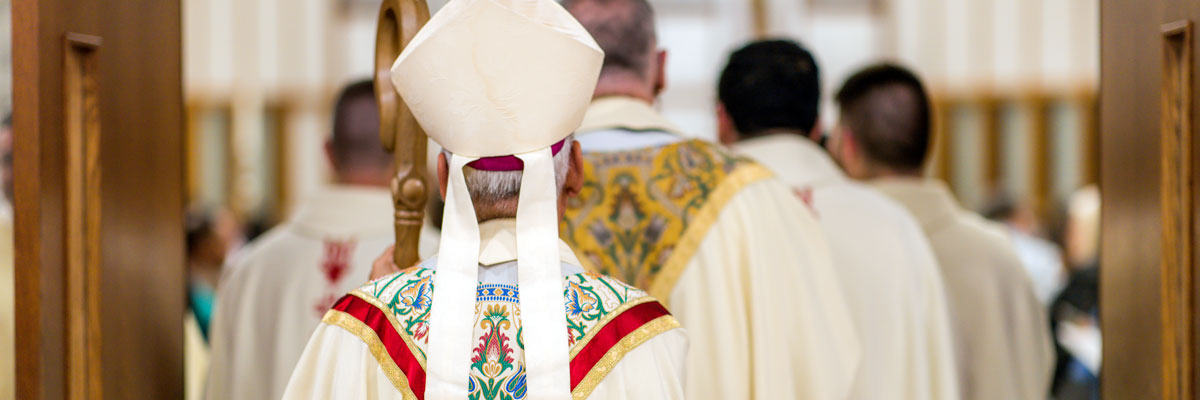Official Website of the
Catholic Diocese of Little Rock
Mary of Magdala is a faithful witness
Published: June 16, 2012
This is the final column in a 13-part series
By Cackie Upchurch
Director of Little Rock Scripture Study
Mary of Magdala has made a lasting impression throughout salvation history, perhaps for the wrong reason. Many assume that she was a prostitute whom Jesus befriended and redeemed. Based on the biblical evidence, only the last part is true: Jesus counted her among his friends, and offered her redemption.
 Pope Gregory the Great and Martin Luther both famously portrayed her as a harlot, based on a long line of other preachers, teachers and artists who rolled together several stories from the Gospels to create the unfounded image.
Pope Gregory the Great and Martin Luther both famously portrayed her as a harlot, based on a long line of other preachers, teachers and artists who rolled together several stories from the Gospels to create the unfounded image.
She is sometimes confused with the woman who anointed Jesus' head in Mark 14:3-9, or the "sinful woman of Luke 7:36-50 who used her tears and her hair to anoint his feet, or even the woman of John 8:2-11 who is caught in adultery and dragged into the public square for stoning.
This unfortunate mixture points to the importance of investigating the biblical stories more closely. "Mary, called Magdalene" is indeed delivered of seven demons (Luke 8:2), but nowhere in Scripture is there a connection between sexual sin and demon possession. If anything, demons were most often associated with conditions that today would fall under the category of mental illness or neurological conditions that were unexplained in the ancient world.
In Scripture, this Mary is from Magdala, a once busy fishing village on the western shore of the Sea of Galilee, also known as Lake Gennesareth or the Sea of Tiberias. She is among the faithful women of Galilee who accompany Jesus in his journey through Jerusalem, ministering to him, and even remaining present through the crucifixion and at the burial site (Luke 8:1; 23:55-56; Matthew 27:56-66; Mark 15:33-47; 16:1).
Mary of Magdala is identified in all the Gospels as a witness to the final events of Jesus' life. She is among the first to witness the empty tomb (Mark 16:1-8; Luke 24:1-12) and the very first to experience the resurrected Christ (Matthew 28:1-10; Mark 16:9-11; John 20:11-18).
One of the most poignant resurrection encounters is found in John 20:11-18, where Mary is wracked with grief, weeping at the tomb. When two angels ask the reason for her tears, she says, "They have taken my Lord, and I don't know where they laid him." She has a personal investment in him and she wants him back.
We can imagine the confusion, anger and profound sorrow, and then Jesus himself is standing there, still unrecognized in his resurrected condition, presumed to be a gardener who may have moved the body. Only when Jesus speaks her name, "Mary!" does she recognize him.
It's a lovely echo of an earlier story of Jesus found in John 10:1-18. In this story, Jesus used a pastoral image of a shepherd and his flock to teach his listeners that he desired an intimate relationship with them. Jesus described the shepherd who leads his sheep, walking ahead of them and calling their names. He says the sheep follow "because they recognize his voice." And then he describes himself as the good shepherd who knows his "sheep" so well that they recognize his voice.
Mary recognized the voice of Jesus, and in that recognition, she also must have remembered all that he was to her and all that he had done for her. She clung to him, no doubt wanting him to remain with her, wanting him to continue to speak her name and the names of those who ministered with him.
She surely wanted to hold on to what was familiar and trustworthy. In telling Mary to let go of him, Jesus is inviting her to a greater level of trust that is not dependent on his physical presence. In fact, this deepening trust will assuredly launch her and the early church into unexpected experiences where the presence of Jesus will take a new form among them.
Only in letting go of him could Mary fulfill the commission given her by Jesus: "Go to my brothers and tell them, 'I am going to my Father and your Father, to my God and your God.'" Little wonder that the Eastern churches speak of Mary as the "apostle to the apostles" since an apostle is one who is sent.
Mary came to Jesus as a person on the fringes (those seen as ill or possessed were ostracized) and now Mary leaves Jesus as one who knows the Lord and is given a prominent role in the community.
Study Questions
- Why is it important to have all the information needed when forming an impression of another person (whether that person appears in Scripture or is someone we encounter in daily living)?
- Read some of the Scripture passages describing the women of Galilee who accompanied Jesus. What sacrifices do you imagine they made, and what blessings might they have received?
- What experiences of letting go help you to understand Mary's situation in the garden after the resurrection?
- How could misidentifying Mary Magdalene as a harlot prevent us from appreciating her role in salvation history?
This article was originally published in Arkansas Catholic June 16, 2012. Copyright Diocese of Little Rock. All rights reserved. This article may be copied or redistributed with acknowledgement and permission of the publisher.









